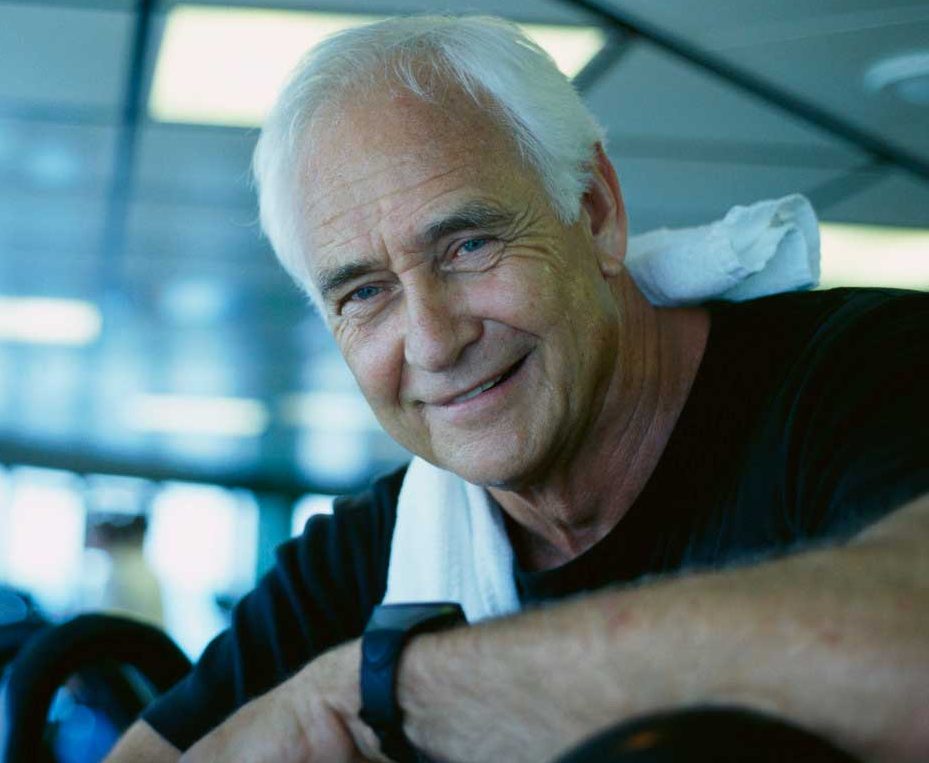How to Keep Your Independence as You Age

Exercise and staying mentally sharp and socially engaged are the keys to living in your own home as long as possible.
It takes action to maintain self-reliance as you hit your golden years. The sooner you start, the better off you’ll be.
There is no doubt that sustained exercise is the cornerstone on which your continued independence is built. It strengthens and sustains your physical and mental health.
YOU MIGHT ALSO LIKE: The Importance of Friendship in Old Age
Maintain your balance and hearing
Older adults who do not have movement disorders like Parkinson's disease tend to lose their mobility and independence after hospitalization or falls.
To avoid falls, you need to maintain your balance, which depends in part upon your hearing. In fact, just mild hearing loss may triple your chance of falling, according to a study of people in the middle years — from 40 to 69 — when most of us aren’t yet worried about falling.
Nearly 25 percent of those aged 65 to 74 and 50 percent of those who are 75 and older have disabling hearing loss, according to government statistics.
Don’t take balance for granted. But don’t let fear of falling become your excuse for sitting in a chair. That approach will backfire.
You can find 10 balance exercises for seniors here. Exercise generally, including walking, will help cut your risk of a disabling fall.
It’s also necessary to get — and wear — hearing aids if you need them.
Get the help you need
If you’ve been discharged from the hospital, you’re likely to have trouble walking. Ask for a program called CAPABLE, home visits by nurses and occupational therapists designed to help low-income older adults to stay in their homes.
Many seniors need guidance to continue exercising, even if they haven’t been hospitalized. In one study, a combination of walking with a goal of 150 minutes a week, strength training with ankle weights, and attending exercise classes twice a week cut the risk of losing mobility by 18 percent over two and a half years.
Avoid sitting all day
This is true for everyone, at every age. Get up and walk to the bathroom or the kitchen for a glass of water, rather than keeping a pitcher on your table. A study of older women, for example, found that women who spent more time standing cut their mortality risk by almost 40 percent.
Cognitive decline is another major risk factor that forces people to live in supervised situations. Exercise again will help you stay sharp, according to a review of 46 clinical trials involving nearly 5,1000 participants.
You’ll need to be disciplined. Most Americans don’t exercise enough. Only about 22 percent of men aged 50 to 64 get enough exercise, and 15 percent of those past age 65. Among women, the numbers were 18 percent and 11 percent.
It’s never too late to start exercising
To get you going, the American Geriatrics Society developed a program called Go4Life.
The program is designed to help you maintain your daily activities — such as climbing stairs, mowing the lawn, carrying groceries, and prevent falls that can lead to severe disability.
While exercise can help you maintain your brainpower, it’s wise to supplement physical activity with mental challenges.
One study found, for example, that playing a specialized 3-D video game helped older adults focus and multitask. The participants were ages 60 to 85.
“The finding is a powerful example of how ‘plastic’ the older brain is,” said study leader Adam Gazzaley, MD, PhD, of the University of California, San Francisco.
Another important factor is your social network. Several studies have reported that social interaction among older adults can help prevent disease and mental decline, while boosting happiness.
If disease and a decline in your health does affect your mobility and the ability to do things for yourself, advances in assistive technology have made it easier for you to get around and maintain your everyday life in your own home.
Some 88 percent of the older adults in a University of Michigan survey said they feel it is very important or somewhat important to remain in their homes as long as possible.
A wide variety of mobility aids are available today, such as scooters and stair lifts. Other devices can make daily activities around your house easier, from raised toilet seats to grab bars and extenders that help you reach items in cabinets and closets.
It’s important, though, to talk with your doctor, an occupational therapist, or experts at a home healthcare store that sells a variety of mobility aids. You need to know how to use every device properly and safely.
We all get old, but it just might be something worth laughing about. A study that considered the role of “coping humor” in the physical and mental health of older adults found that it reinforces your ability to get up and go, whatever your challenges.
Updated:
February 08, 2023
Reviewed By:
Christopher Nystuen, MD, MBA and Janet O'Dell, RN